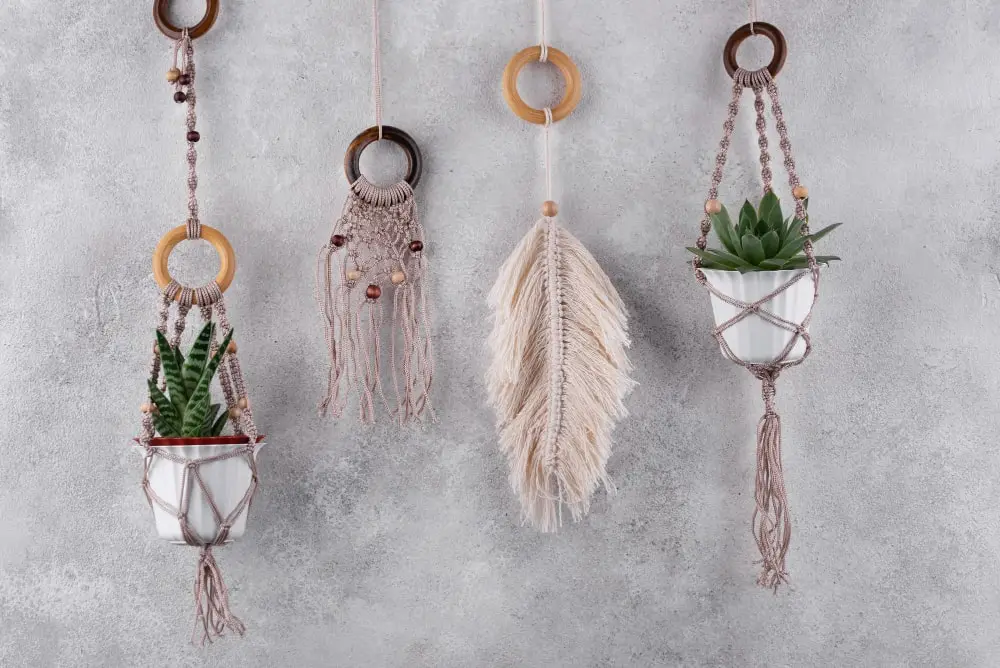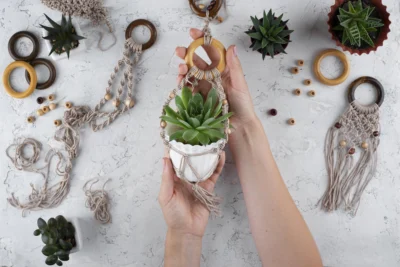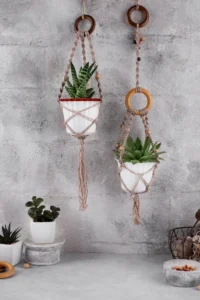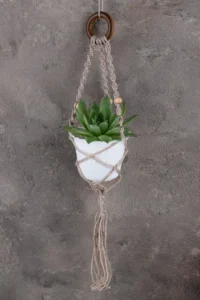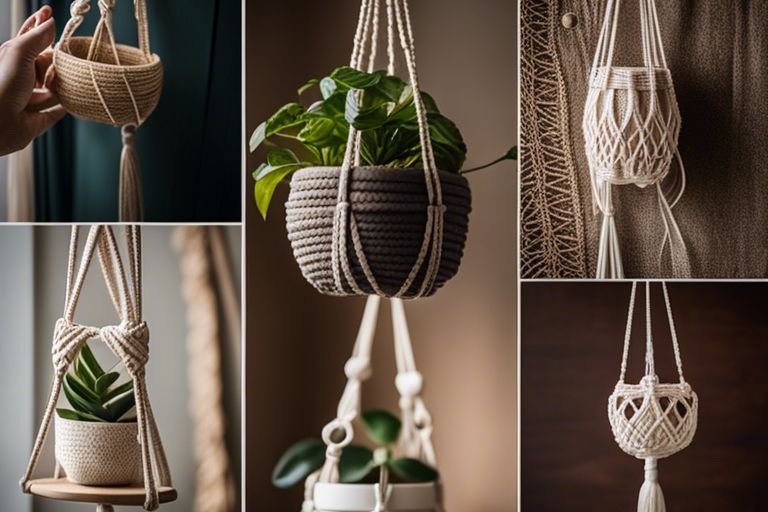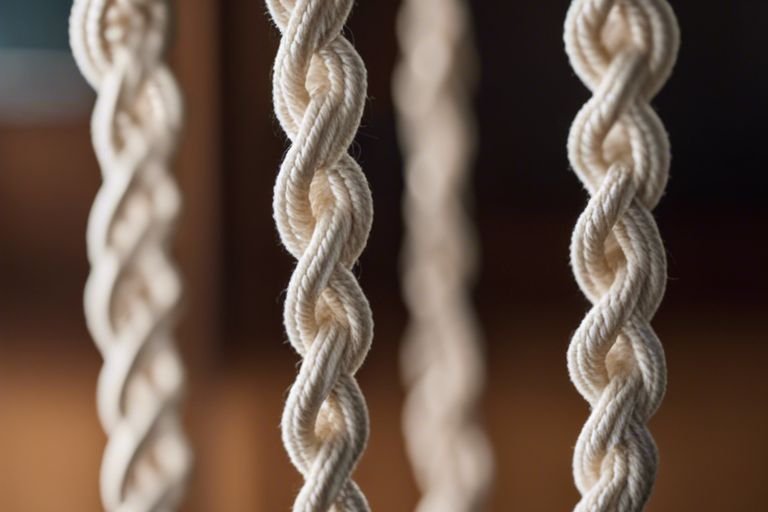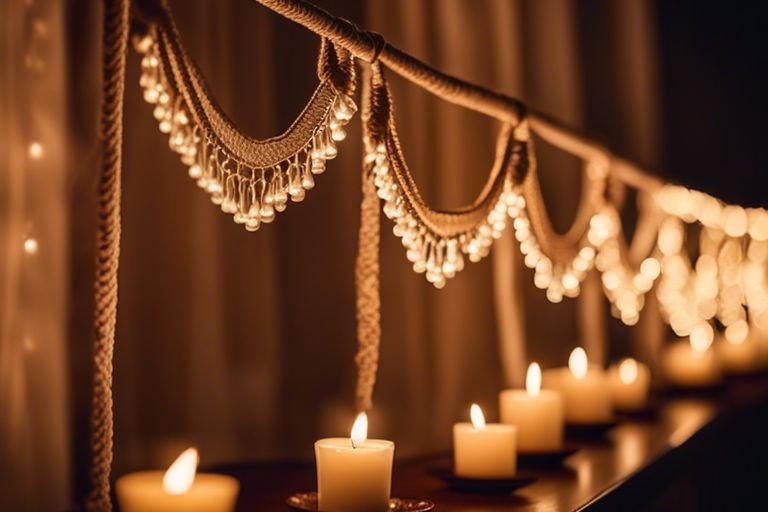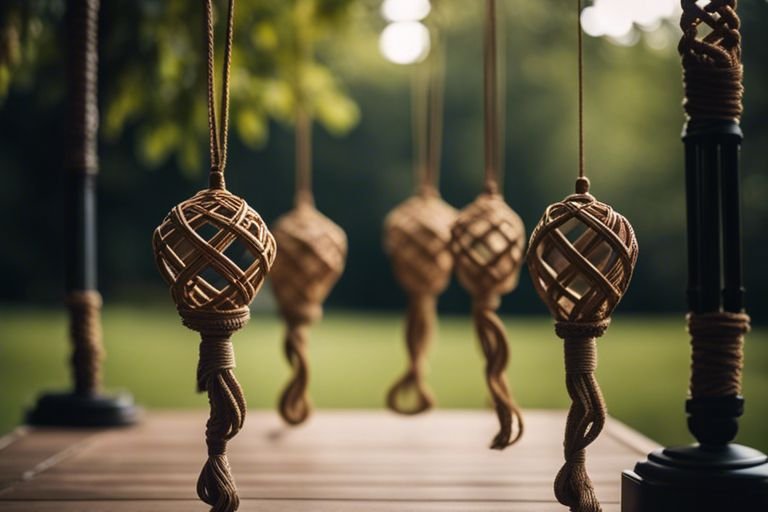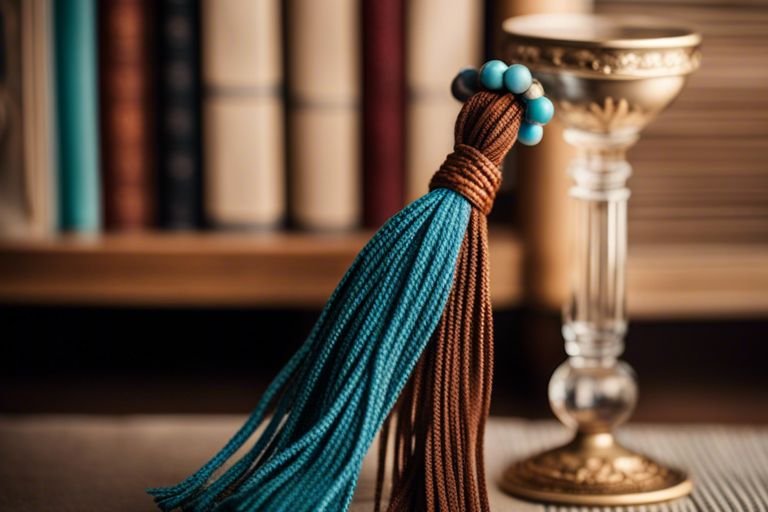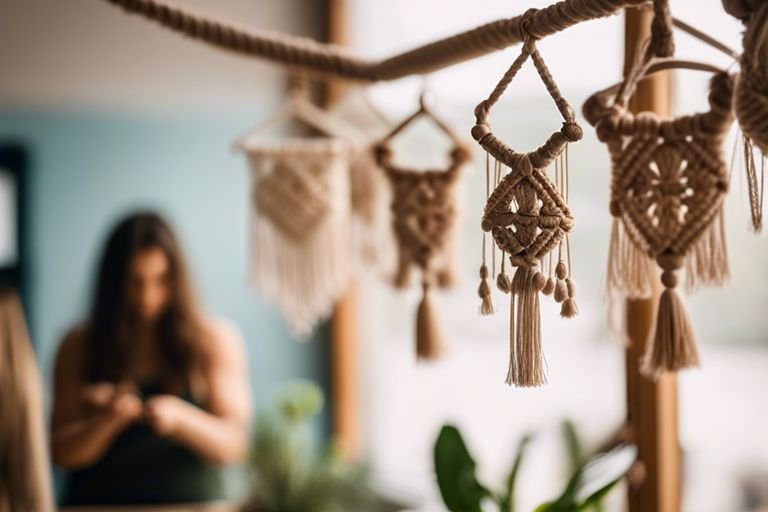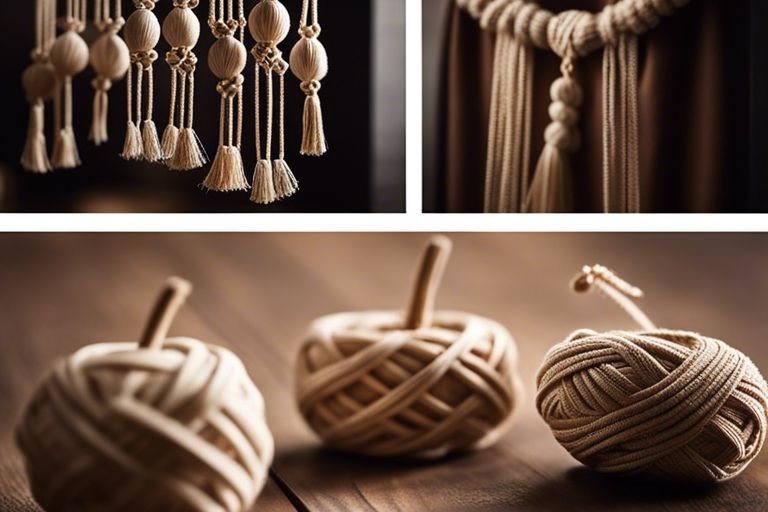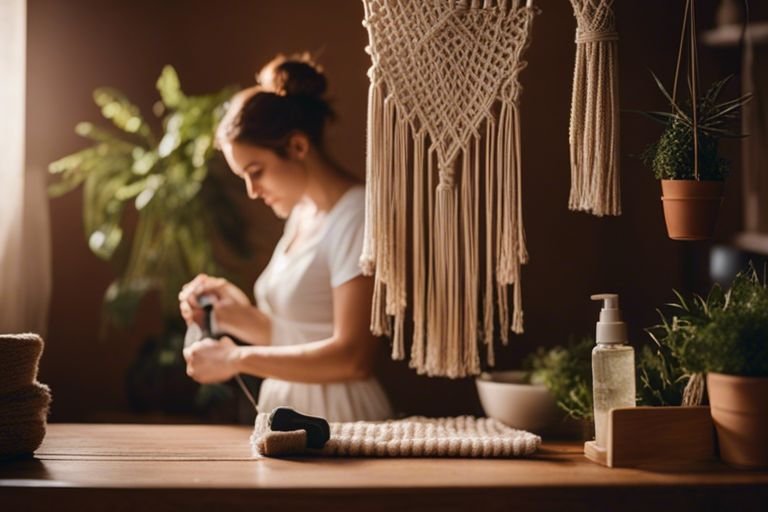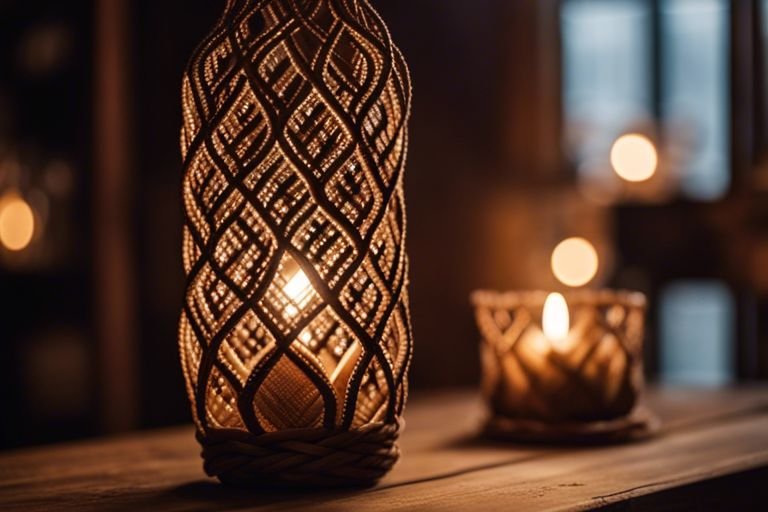Introduction:
In the realm of interior design and home decor, macrame’s resurgence has captured the imagination of creative enthusiasts. A particularly charming application of this ancient art form is the creation of macrame plant hangers. These intricate and stylish hangers not only showcase your favorite greenery but also add a touch of bohemian elegance to any space. In this comprehensive guide, we’ll explore the history of macrame, examine the benefits of using plant hangers, and provide a detailed step-by-step tutorial to help you create your own stunning macrame plant hanger.
The Art of Macrame: A Historical Perspective
Macrame, derived from the Arabic word “muqrama”, meaning “curly fringe”, has a rich history dating back to the 13th century. Originating in the Arab world, macrame spread throughout Europe during the Renaissance and gained widespread popularity in the Victorian era. The craft involves the creation of textiles through the art of knotting, a technique that transcends time and culture.
During the 1970s, macrame experienced a resurgence, becoming synonymous with the counterculture and bohemian lifestyle. Today, it has evolved to incorporate a modern aesthetic while retaining its timeless appeal, making it a popular choice for a variety of DIY projects, including creating plant hangers.
Please read our article The Macrame Art : A Beginner’s Guide to get more depth about macrame history.
YouTube Macrame Plant Hanger Easy DIY Tutorial
Courtesy by Marching North
Advantages of Macrame Plant Hangers:
Aesthetic Appeal:
Macrame plant hangers are visually appealing, adding a touch of handmade artistry to your living space. Intricate knots and patterns create a unique and eye-catching display, turning your plants into stylish decor elements.
Plant Hanger Space Optimization:
For those with limited floor space, macrame plant hangers offer a clever solution by allowing you to suspend your plants from the ceiling or walls. It not only maximizes space but also introduces a dynamic and vertical dimension to your home decor.
Efficiency of Macrame Plant Hangers:
Macrame plant hangers come in a myriad of designs, from simple and modest to intricate and ornate. This versatility ensures that there is a macrame hanger to suit every taste and complement any style of interior decoration.
Getting Started: Materials and Tools for Plant Hanger
Before starting your macrame plant hanger project, gather the necessary materials and tools.
Plant Hanger Macrame cord or rope:
Choose a cord or rope that suits your aesthetic preference. Common materials include cotton, jute, or synthetic fibers. Consider thickness and color to match your decor.
Potted plant with hanger:
Choose a small potted plant with a built-in hanger or a plant that can easily be adapted to hang. Make sure the size and weight of the pot are suitable for the macrame hanger you plan to make.
Scissors:
A sharp pair of scissors is essential for cutting the cord cleanly and accurately.
Lace Measurements in Macrame Plant Hanger:
Use a tape measure to ensure accuracy in cutting the cord and getting the desired length for your plant hanger.
A step-by-step guide to making a macrame plant hanger:
Step 1: Selecting the right bone
Start by choosing a macrame cord or rope for your project. Consider material, thickness, and color to match your design vision. Common choices include natural cotton for a soft, bohemian look or jute for a more rustic feel.
Step 2: Measure and Cut
Measure and cut four equal lengths of cord. The standard length of each piece is about 8 feet, but adjust to the desired length of your plant hanger. Make sure the length is consistent for balance.
Step 3: Making the Top Loop
Take the four cords and fold them in half. Make a loop at the top, making sure it is large enough to hang securely from your chosen hook or fixture. This loop serves as an anchor point for your plant hanger.
Step 4: Starting the knots
Divide the cords into pairs and begin making basic knots. The square knot and the half square knot are the basic macrame knots. Start about 6 inches down from the loop, as this part will become the top of your plant hanger.
Step 5: Developing under the hangar
Continue knotting the length of the cords. Depending on your design, you can experiment with different knot patterns to achieve different textures and visual interests. Maintain consistency in tension to ensure uniform appearance.
Step 6: Making the Plant Holder
When you get to the middle of your cords, introduce a pattern or series of knots to create a holder for your potted plant. This section should be large enough to accommodate the width of the vessel while providing secure support.
Step 7: Untie the knots
As you near the end of your cords, finish off the macrame hanger with the last set of knots. This can be a repeat of the knots used at the top or a different decorative knot for added flair.
Step 8: Trim and Fringe (Optional)
For a sleeker look, trim the excess cord to the bottom of your plant hanger. If you prefer a more bohemian aesthetic, leave the ends cropped to create an edgy effect.
Step 9: Hanging and Adjusting
Hang your finished macrame plant hanger from a sturdy hook or fixture. Adjust the length as needed to achieve the desired height of your potted plant. Step back and admire your handiwork creation.
Tips for Macrame Plant Hanger Success:
Experience with Knots:
Don’t be afraid to experiment with different knot combinations and patterns. Mix and match square knots, half-square knots, and spiral knots to create a unique and personalized design.
Choose the right plant:
Consider the size and weight of your potted plant. Make sure the plants and pots are suitable for hanging and won’t affect the structural integrity of your macrame hanger.
Secure hanging point:
When hanging your plant hanger, choose a secure location on your ceiling or wall. Use a sturdy hook or fixture to ensure the hanger and plant are securely supported.
Play with color:
Explore the wide array of cord colors available. Consider matching the color of the cord to your plant foliage, or choose a contrasting color for a bold statement.
Custom length:
Adjust the length of your macrame plant hanger to the specific location of your home. Experiment with different lengths to find the perfect balance.
Conclusion:
Finally, crafting a macrame plant hanger is a rewarding and creative endeavor that allows you to imbue your living space with both natural beauty and artistic expression. As you embark on this DIY journey, you not only create a functional holder for your plants but also contribute to the rich legacy of macrame craft. Whether you’re a seasoned craftsman or a new enthusiast, the versatility and timeless appeal of macrame plant hangers make them a delightful addition to any home. So, pick up your cord, tie those knots, and watch your living space transform into a haven of botanical beauty.
Inorder to get the trending macrame designs of 2023, kinsly read our article Macrame art | 15 simple designs with Macrame cords trending in 2023
Special thanks to www.fastwaysites.com for developing dorart.pk


